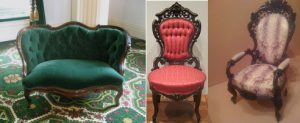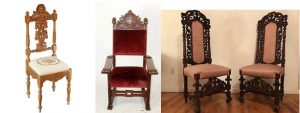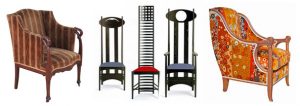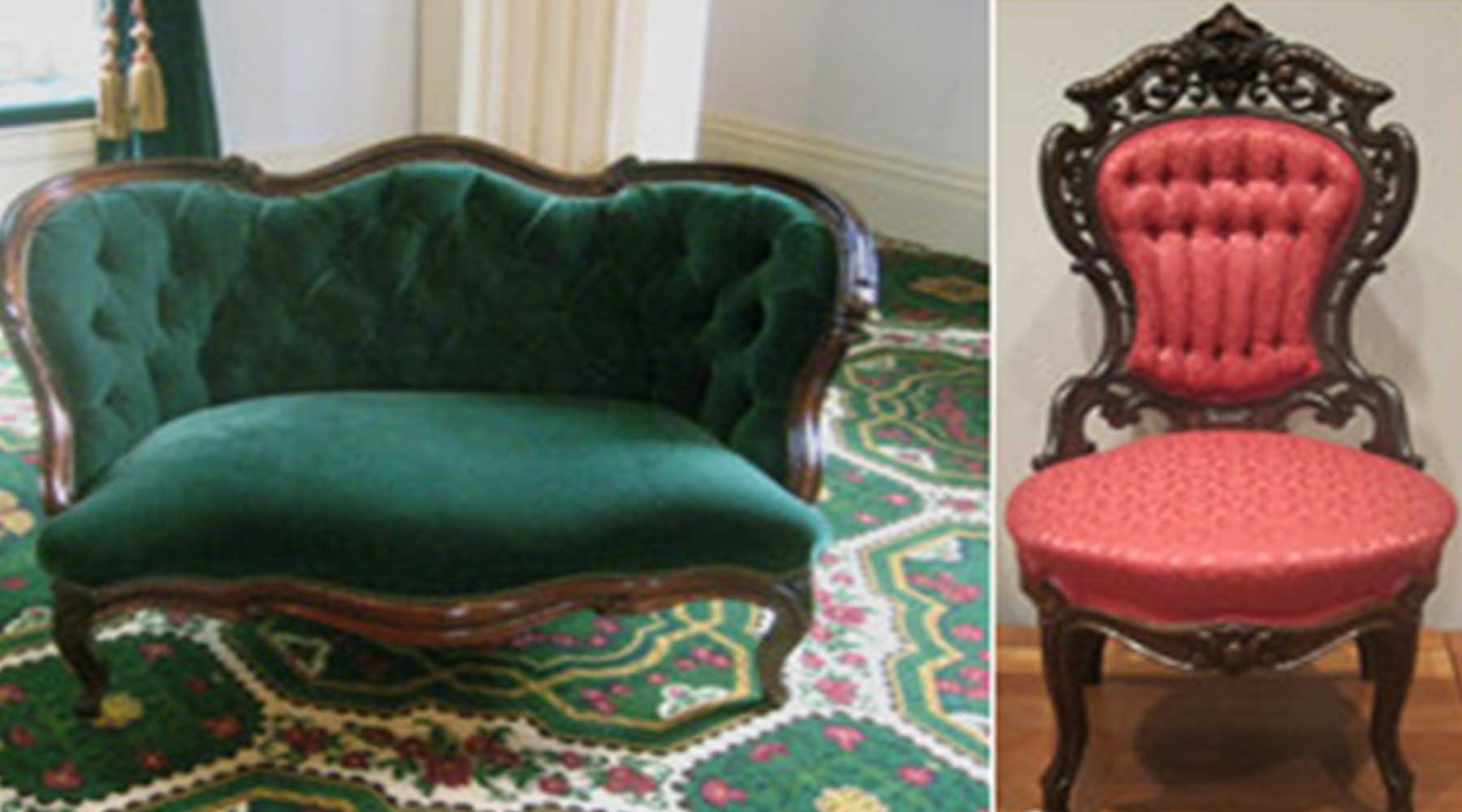We continue our ‘history of upholstery’ series with blogpost number 6 of the series, covering the Victorian era, and in particular the Rococo revival, Renaissance revival and Art Nouveau periods.
The long reign of Queen Victoria lasted from 1837 – 1901. Due to the length of her reign, there were many differing styles and fashions which took hold in upholstered furniture. Due to the massive growth in global trade, emigration to Americas from Europe and elsewhere, and increased travel and communication options during this period, a lot of styles and fashions in upholstery became global rather than regional and national in their scope.
As well as the development of advanced upholstery techniques such as deep-buttoning and coil-sprung seats (discussed in our previous blogpost, number 5 of the series), the mechanisation of certain tasks previously completed by hand, and the mass production of furniture for the first time, changed the world of upholstered furniture for good. This era also incorporated many styles/periods, such as the Rococo revival (1850-1880), the Renaissance revival (1860-1900), and the beginning of the Art Nouveau period (1890-1910).
The Rococo revival period lasted from 1850-1880, and a lot of upholstered furniture from this era is extremely ornate, with 17th century style carvings. Mahogany and rosewood were both popular during this era, as these woods were both capable of producing imposing furniture with plenty of curves, rounded corners and elaborate decorations. A technical improvement introduced into furniture design during this period was the use of plywood. Plywood had great strength and stability, and could be more intricately curved than a natural piece of wood. American cabinetmaker John Henry Belter was a famous producer of Rococo revival furniture, using plywood to great effect, and indeed his name (Belter) was used as a generic term for all Rococo revival furniture as a result. In this period, upholstery had become a main factor in furniture design, the number of fabrics available had mushroomed, and as comfort became more important, easy chairs, sofas and dining chairs with padded seats were introduced. Below are 3 examples of such Rococo revival era upholstered seats:

Introduced in the late 1850s as a counter-balance to the flowery Rococo Revival, and lasting until the turn of the century, the Renaissance Revival borrowed elements from just about every furniture period since the 15th century. The impetus for the revival originated in the French court of Napoleon III and initially tried to recreate the furniture of the 15th and 16th century, but the form soon took on a life of its own.
The furniture produced was an eclectic mix of 14th-century Italian Renaissance, Neoclassical and 16th-century French style and was based essentially on the rectangle form with myriad embellishments. Precious metals and semiprecious stones were used as decoration, as was porcelain and bronze. The decoration, no matter how elaborate, was always anchored by the requisite architectural elements of the column and the pediment. But as elaborate and painstakingly detailed as these masterpieces appeared to be, they still were based on geometric forms with turned, cutout or incised decorative elements that could be mass-produced on a machine and installed in layers to get the deep, complicated look. Below are displayed some examples of upholstered furniture from the Renaissance Revival period.

Appearing from 1890 to 1910, Art Nouveau was a very distinct, decorative style that became popular, bridging the Victorian and Edwardian eras. The term ‘Art Nouveau’ means “new art” in French. In essence, it was a desire to create a new style for the coming 20th century, and a conscious attempt to abandon any notion of the dated, revivalist styles of the past. It embraced the new industrial aesthetic rather than challenging it. It features naturalistic but stylized forms, often combined with more geometric shapes, particularly arcs, parabolas, and semicircles.
The Art Nouveau movement focused on a desire for quality craftsmanship in an age of growing industrialization and mass-production, spurred on by key modernist thinkers in the arts, such as William Morris. Henry Van De Velde, a Belgian architect and designer, is largely credited with being Art Nouveau’s chief promoter, but because it emerged over a brief period of time in so many places, Art Nouveau was known by different names. For example, it was called “Glasgow Style” in Scotland thanks to the influence of prominent designers like Charles Rennie Mackintosh, although some say that the peculiarities of his particular designs were a variant of Art Nouveau, rather than Art Nouveau proper.
Art Nouveau furniture was often made of hardwoods, especially walnut, oak, and teak. Art Nouveau furniture was popular, but it never completely superseded other furniture styles, because it was expensive to produce and required a high level of skill. The furniture’s most distinctive elements, long elaborative curves, and twists, had to be done by hand. The result was a style that most people couldn’t afford. Art Nouveau fell out of favour before the start of World War 1 (1914-1918), so it was relatively short-lived. But it proved very influential, and is sometimes called the first ‘modern style’. Below we have some examples of Art Nouveau period chairs.



